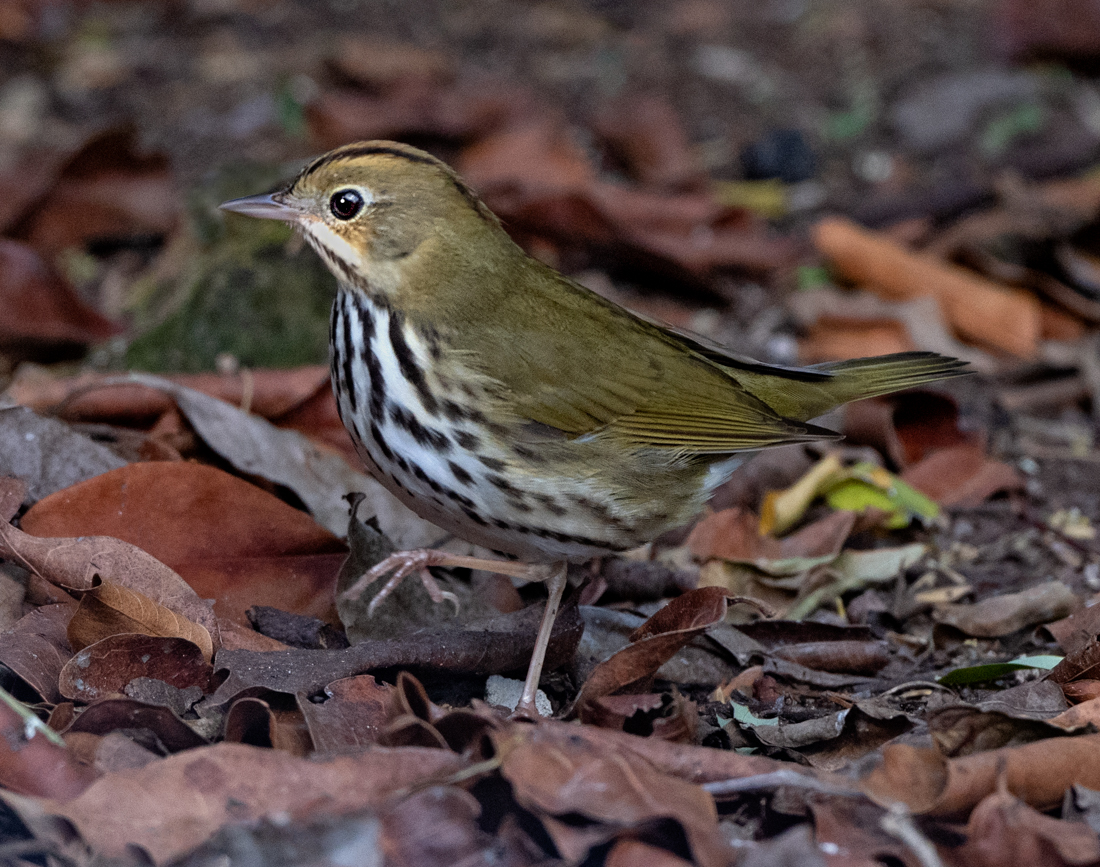
By ABA Young Birder — Otys T.

In preparation for the 2022 World Series of Birding in Cape May, NJ, my mentor Andrew Eppedio held practices for my youth team, the Pete Dunnelins, at an Audubon sanctuary in NJ. After one of our Sunday training sessions, Andrew took us to the basement where the sanctuary kept a freezer. Inside the packed ice box were dead birds that collided with a tower in Newark. He told us that volunteers at the sanctuary were collecting data so that they could know how many birds were dying because of this building. I remember that the freezer was packed to the top with folded Ziplock bags. Inside the bags were beautiful migratory birds, like Black and White Warblers, Northern Parulas, and Blackburnian Warblers. I felt very bad for those birds and immediately wondered what I could do to help prevent more birds from dying. The specimen that impacted me the most was a Great Blue Heron. It was so big, and seeing it up close, dead, and in a freezer was unbelievable. It was the first time that I saw the impacts of window strikes on birds. After that day, my dad and I had a lot of meaningful conversations and we did a lot of research. We discovered that window strikes are now the number one cause of human-associated bird deaths. According to Daniel Klem Jr, the world’s expert on window strikes, over one billion birds each year die because of collisions with glass. In Klem’s book Solid Air, he explains that the 2010 Deep Water Horizon oil spill caused 1 million bird deaths. Klem’s original estimate of annual window-related bird strikes in the 1970s was 100 million. That would mean that each year, the number of birds killed by windows would be equal to 100 Deep Water Horizon oil spills! I was shocked when I learned this, and I could not believe that people were responsible for so many bird deaths and yet they did not even know they were happening.
Later that spring, I went on many bird walks with my dad. Together we practiced birding on the campus of Stevens Institute of Technology in my hometown of Hoboken, NJ, a small city beside the Hudson River and across from New York City. During my birding outings around Stevens Campus, we saw a variety of species such as White-Throated Sparrows, Dark-Eyed Juncos, European Starlings, Common Grackles, Northern Cardinals, Mourning Doves, and Rock Doves. We also found migrating species like Black and White Warblers, Black-Throated Blue Warblers, Blackpoll Warblers, Northern Parulas, and Chestnut-Sided Warblers. Throughout the year we had also discovered flycatchers, raptors, gulls, geese, ducks, and other surprises like snakes, bats, bunnies, foxes, and groundhogs. Throughout all of those times I came to see that my little city had an ecosystem, and so many of the creatures living within it gave me so much happiness and joy.
Then on May 7, 2022, my dad and I heard an Ovenbird and a Warbling Vireo singing. We ran to a patio at the base of a new glass dormitory tower the school had built. And on the stone floor in front of us, dead, were the migratory birds we had just heard! As the Newark study was fresh on my mind, I decided this was my chance to make a change. My dad helped me bag those first two birds just like we had seen the citizen scientists doing with the Newark birds.
Every day for the next month I returned and found even more dead birds: Mourning Doves, Northern Flickers, Redstarts, and Song Sparrows. We also noticed that most non-birders around campus did not notice these dead birds until we pointed them out to them. I began researching on the Internet, and I read about experts at the American Bird Conservancy who helped New York City pass its Bird-Friendly Building legislation. After a Zoom meeting with one of their experts, I was encouraged to start collecting data by using D-Bird, a website where you can log dead or injured birds. They also told me to reach out to the facilities staff on the campus of Stevens. During my various phone calls with the Head of Buildings and Grounds to discuss the issue, it was clear they were sad about what was happening. However, before they would make any changes they told me that they needed to collect more data to better understand the extent of the issue. I was able to contact the Dean of Students, who put me in touch with the service fraternity at Stevens. I showed them D-Bird and together we came up with a way to collaborate to enhance the data collection.
The problem is not solved yet, but I am working on collecting more data, I am introducing more people to the problem, and I am creating awareness to encourage others to help birds. One of my hopes for when Stevens Institute agrees to make changes and make their buildings safer for birds is to have a tree as a memorial to the many birds that have to suffer because of window strikes. I plan to bury the birds that I saved in my freezer beneath a tree just outside of the dormitory. I hope that my project will help other people be more aware of how window strikes harm birds, and I hope it inspires them to take action in places where they live.

Otys T. (13) lives and birds in Hoboken, NJ. He loves birds, fish, nature, baseball, and, especially, his furry Spaniel-Lab Rigby. He is a member of the NJ Youth Birding Club and the Boy Scouts. He enjoys leading kid-friendly bird walks with his dad around their city. His spark birds are Red-Tailed Hawk and Chuck-Wills-Widow.


